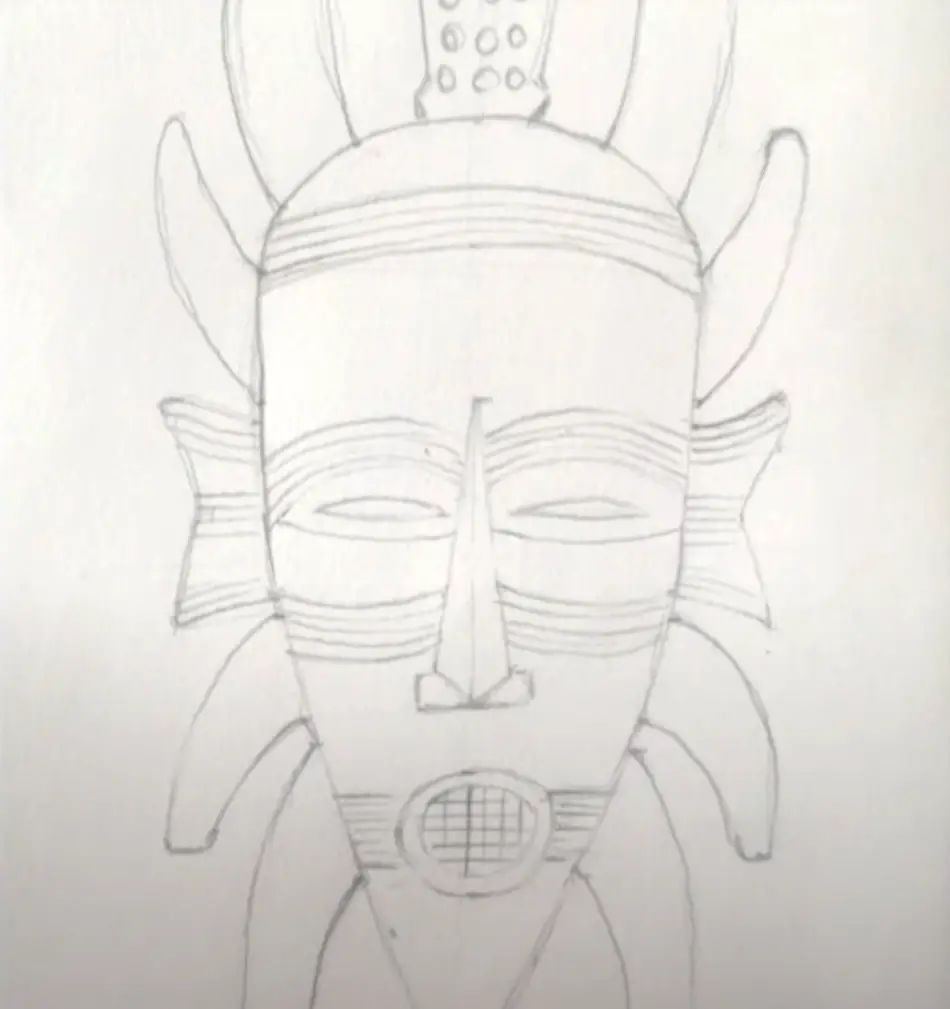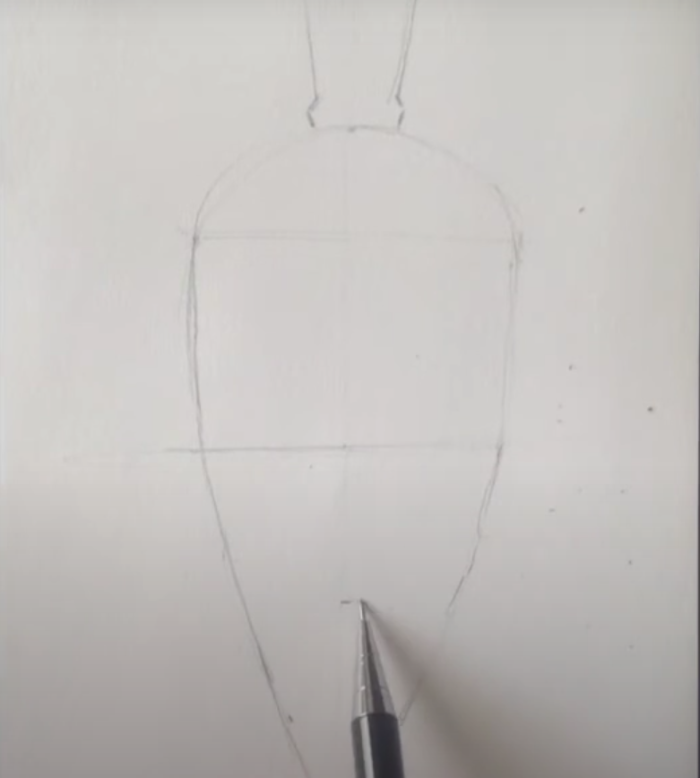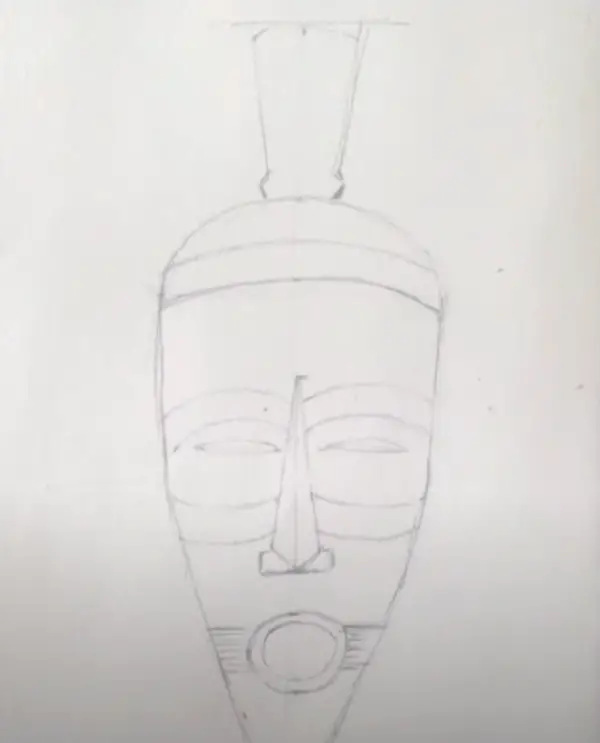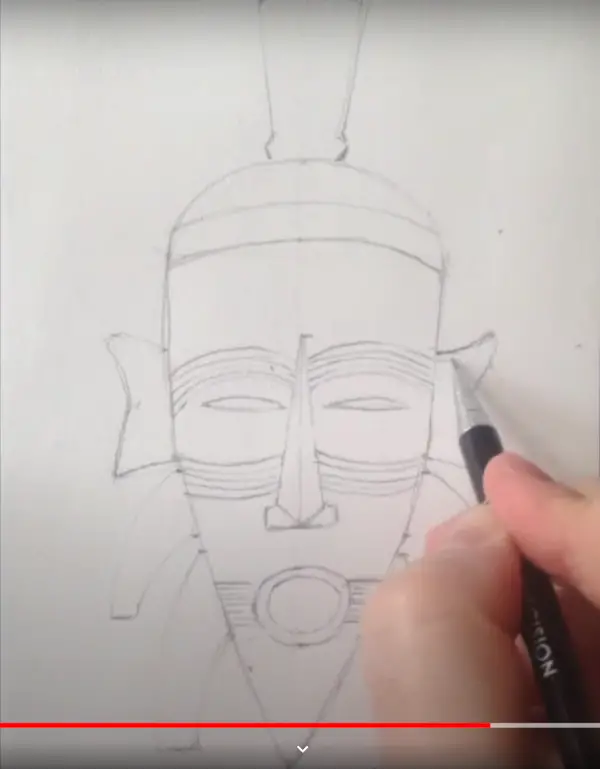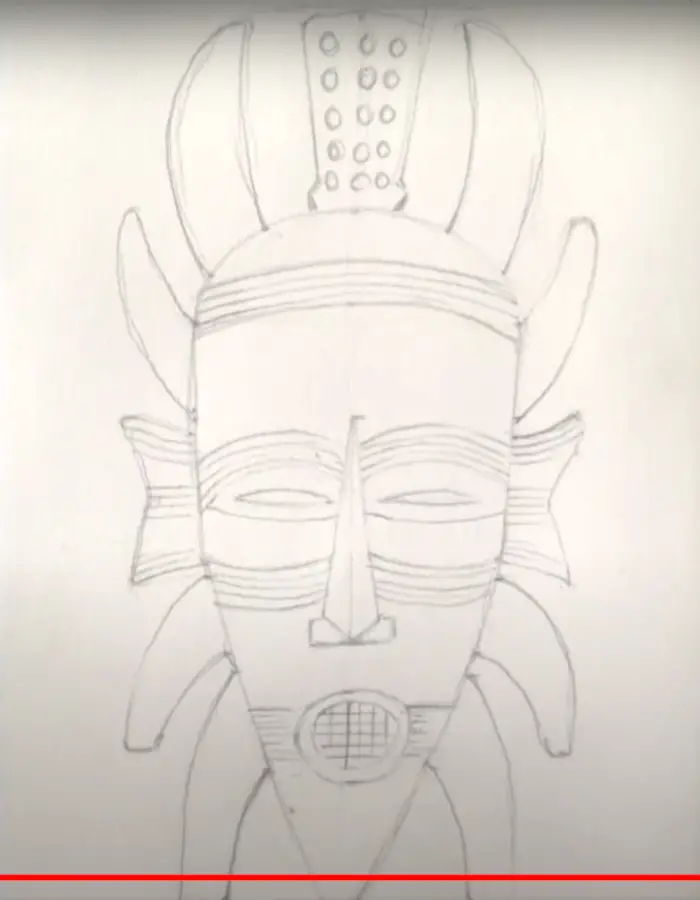Masks offer an excellent source of inspiration if you are looking for something new to draw. You can not go wrong if you choose to draw a tribal mask.
How to draw a simple African Mask? To draw a simple African Tribal mask, you will need to follow the following steps:
In this post, I will describe how to draw and find inspiration by drawing a tribal mask step by step. I will explain in detail how to find a mask and begin your drawing. Plus, how to progress onto adding the individual features, patterns, and details.
Find a Mask to Draw
The traditional African mask offers an excellent source of inspiration to create beautiful drawings and mixed media artwork.
As with all subjects, it is always best to draw your subject from direct observation. This will enable you to look at and examine your topic from various viewpoints and angles.
To find a mask to draw from direct observation, you can look in several places. If you are lucky enough to visit Africa, then you can buy one directly.
Another excellent way to draw from direct observation is to visit your nearest major museum, which will usually display a large number of artifacts from different cultures.
These are usually displayed under direct spot lighting which creates, cast shadows and unusual conditions under which to draw a mask.
If you are unable to find a mask to draw from direct observation, the internet is an excellent source of information.
The advantages of using the internet to source imagery to draw are that you can really narrow down your search parameters.
All you need to do is type ‘South African’ or ‘Congolese Tribal Masks,’ and this will provide you with specific examples to print out, save and draw.
Draw the Outline Shape of Your Mask
Tribal masks can be drawn with a variety of shapes, from ovals, squares, rectangles, and circular shapes. Additionally, masks have a tendency sometimes to be elongated. In contrast, they can also be drawn using regular shaped circles and squares.
The first stage in drawing your tribal mask is the draw the outline shape of the mask. If you are drawing a mask for the first time, it draws the mask in pencil.
Use a faint continuous line to sketch the contour outline of your mask. Remember not to press hard with the point of the pencil. Instead, hold the pencil further down the pencil and draw from the elbow and shoulders.
Draw the Main Features of the Mask
Sometimes tribal masks are a combination of both human and animal features. But the central part of drawing your mask is to add the main features of the face.
Draw a centerline down the center of the shape to help you position the basic features of the mask.
To draw these features, you will need to follow the basic format of the human face by incorporating the eyes, nose, mouth and possibly additional features such as hair, nose, mouth, and ears.
Draw the Features of the Mask
The position of the individual parts of the mask, will not be in proportion, as they would be in a standard portrait drawing. For example, the eyes can be drawn higher up the face, the nose may be elongated, and the mouth may be wider than usual.
As well as drawing the individual features in different positions. The unique characteristics may be enhanced by drawing new patterns and shapes around them.
The drawing of dark and light shapes is also an effective way to add contrast to the features of the mask. This results in a balance of black and white shapes in your drawing.
The addition of dark and light is an excellent way to enhance the aesthetic appeal of the drawing. Look at the examples below.
Draw the Eyes
Look carefully at the mask you are drawing. This is usually comprised of basic shapes, such as ovals, diamond shapes, or squares.
Draw this faintly and progress onto drawing the shapes within shapes, these will represent the eyes and the iris.
Look for inspiration in the drawing and original tribal masks that have been produced by the indigenous carver. These will provide you will find an excellent source of inspiration in finding shapes to draw.
Draw the Nose
Use the same process to draw the nose. Look carefully at your mask or the image you are drawing. Again repeating the process and drawing with faint lines at this stage.
Draw a basic outline which will represent the nose.
Within the tribal mask, the nose is usually represented by a long thin elongated shape, such as a triangle or small rectangle.
One this is drawn, the shape can be adapted and detail added to create the shape of the nose.
Draw the Lips and Mouth
In many African tribal masks, the lips and mouth are represented by a set of full-bodied lips. In some variations sometimes this will include in tongue sticking outwards or patterns draw around the mouth.
To draw the mouth draw both a vertical and horizontal centerline around which you can draw the basic outline of the lips. Centerlines are essential here as they will enable you to carefully draw the symmetries of the lips.
The lips and mouth can be highlighted with a bold outline, or as with the eyes, repeating shapes can be drawn which repeat the shape of the mouth and mirror and accentuate its shape.
Designs and decorative features can also be drawn on either the upper or lower lips. Straight lines, for example, can be added to the top or the bottom lips to increase the visual power of your drawing.
Illustrate the Hair
The addition of hair is a fundamental decorative element in your mask, which can be drawn after the addition of the main features and the aspects of the face have been established.
As mentioned earlier in this post, some masks are envisaged as a fusion of human and animal spirits. This possibly includes in some examples the addition of horns around the edge of your mask.
In contrast, the hair can be treated as primary linear lines which repeat themselves to suggest braided hair in the African tradition.
Draw Decorative Elements
A combination of regular and irregular shapes and patterns can be added to the mask to enhance its decorative appearance.
Bold lines are often used symmetrically at the edges of the mask.
Sometimes asymmetrical arrangements of shapes are used instead. With combinations of the pattern added at the top or the side of the mask. The internet is an excellent place to find different examples of a mask to draw inspiration from.
Add Shading, Tone or Color
How that you have finished drawing all of the main features of the mask you can start to add shade, color, or surface decoration.
If you wish to create a simple tonal drawing in pencil, graphite or charcoal pencil. The application of pencil shading will make your drawing seem three dimensional. Additionally drawing which incorporate tone will look more striking visually.
Another alternative method of finishing off your drawing is the application of a color pencil. Color can be applied to the main features and the various areas of the mask.
Color pencil is excellent for adding a bold outline around the main features of the mask. Or color can be built up in layers using the side of the color pencil to add uniform layers of color on top of each other.
Pro Tip: When applying the color pencil, you should shade in opposite directions. This will dramatically reduce any graininess on the surface of the drawing.
Finish your Drawing
How you have completed drawing all the main features and applied color to tone. Take a good look at the overall appearance of your mask and see if any final adjustments need to be made.
Look at the overall symmetry of the mask. In particular, pay attention to the position of the eyes, nose, and mouth.
Also, look out for imperfections in shading and color and make adjustments if you need to.
Additional Questions
African Mask Design Patterns
Many of the patterns out in African masks tend to be geometrical and symmetrical and are utilized in many ways.
Different geometric patterns are used to identify male and female masks.
Square and angular frameworks are frequently carved into the spaces on the spaces on the masks to enhance the appearance of the mask. These patterns often communicate different types of information.
Patterns relate to the tribal customs of scarification, they also refer to the social status of the wearer.
African Mask Facts
- African masks often portray creatures that are used to ward off spirits.
- Tribal masks have influenced many of the masters of modern painting and can be found in many examples of Picasso’s early Cubists painting.
- A mask can also be used to symbolize virtue, bravery, and strength of the wearer.
- Mask carving is a skill which is passed down from peers to the younger generation.

